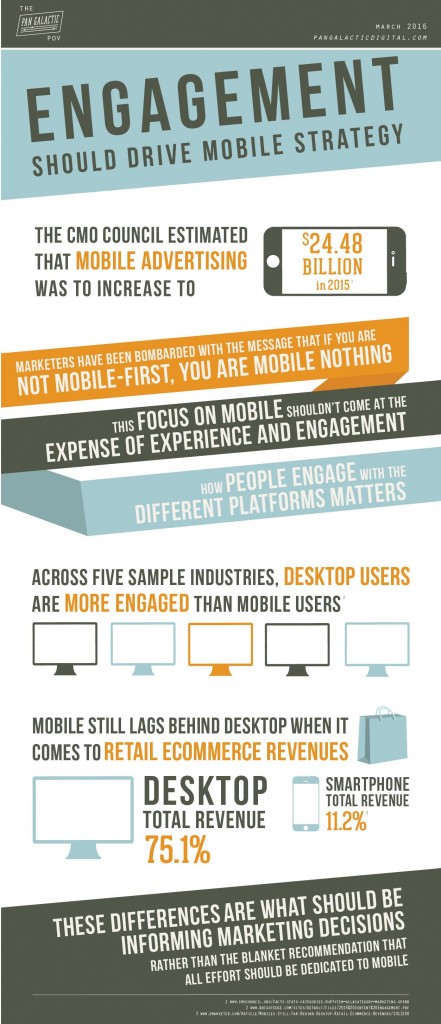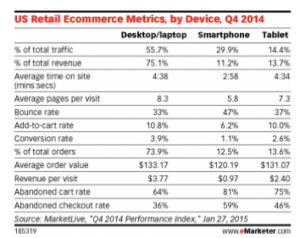2015 was definitely the year of mobile.
I’m not a betting woman, but my guess is that not only will 2016 be the year of the monkey, the Rio Olympics and the U.S. presidential election, but also it will be named the year of mobile.
Like every year before it, us digital marketers expected mobile to be an indisputably important platform in 2015, and it was. It was the year tiny screens went mainstream when it came to marketing dollars. The CMO Council estimated in March 2015 that mobile advertising was estimated to increase to $24.48 billion.
Google somehow heightened mobile’s importance even more when it implemented its mobile-friendly update. Ever since the update’s announcement went live on Google’s blog, marketers have been bombarded with messages that if you’re not mobile-first, you’re mobile-nothing. Headlines have been beating down marketers’ inboxes, giving us all sort of information regarding how to mold this platform into our overall strategy.
“Mobile-First Isn’t Enough. It’s Time For A Mobile-Only Strategy” — Ad Age
“Google To Websites: Be Mobile-Friendly Or Get Buried In Search” — Mashable
“What’s Google’s Mobile-First Rules Mean For Your Marketing Strategy” — Marketing Land
For the majority of companies, mobile should be part of the marketing strategy. Mobile is an incredible platform that absolutely has its merits. But this overt focus on mobile makes me batty. There is a heightened possibility that too many eggs are being haphazardly shoved in mobile’s basket at the expense of experience and engagement.
How People Engage with Different Platform Matters
Think about the last time you reached for your smartphone to perform a search. Maybe it was to find a restaurant’s phone number to make a reservation or to find directions to the nearest park.
It probably wasn’t to submit your credit card information to complete a purchase or to sit down with a cup of coffee and go through your Feedly.
How people engage with different devices matters and should absolutely influence a marketing strategy; what people want on mobile is different than what they want on desktop.
BrightEdge’s Content Engagement Report shows that across five sample industries, desktop users are more engaged than mobile users.
The report goes on to say,
“The differences in mobile engagement across these five industries can be attributed to the ways in which consumers access each industry’s content. With retail, for example, consumers generally spend more time shopping and making purchases on desktop devices and use mobile for quicker, less engagement-rich reasons (finding the location or hours of their local brick-and-mortar store).”
eMarketer found that mobile still lags behind desktop when it comes to retail ecommerce revenue.
That isn’t to say that across the board desktop will always have more engagement than mobile in all industries or instances. Smart Insights found that mobile media time is now greater than desktop and other media while ShareThis found that mobile users share more than desktop users.
These differences are what should be informing marketing decisions rather than the blanket recommendation that all effort should be dedicated to mobile. Each business needs to recognize their KPIs and how mobile will fit into the overall marketing structure.
Focusing only on mobile removes the possibility of a robust marketing strategy. Instead, evaluate how mobile fits into an overall marketing strategy and how it can enhance performance overall.


